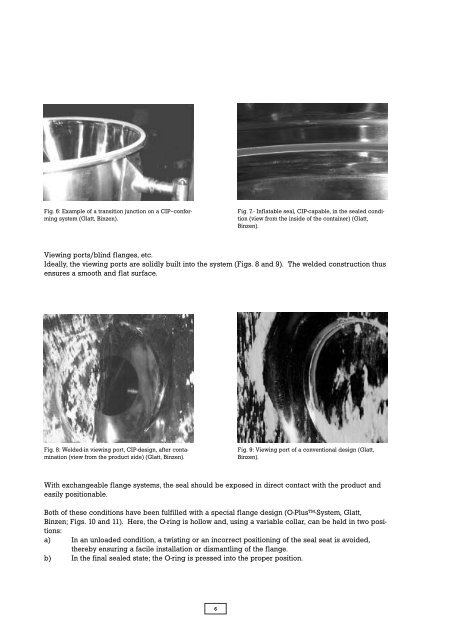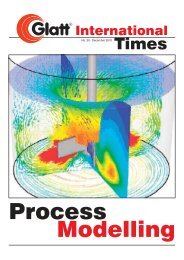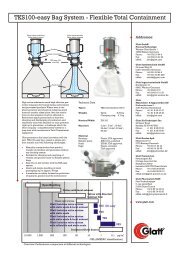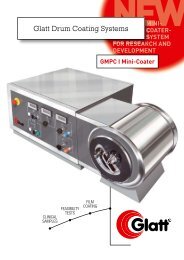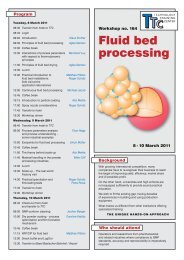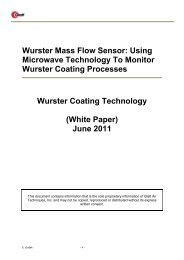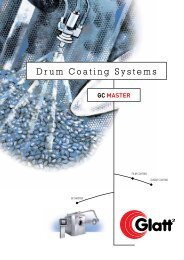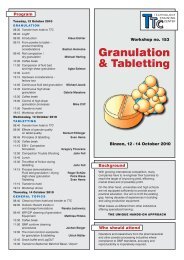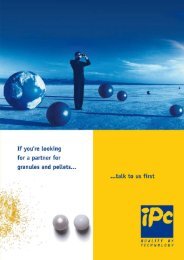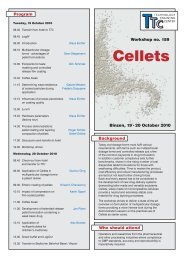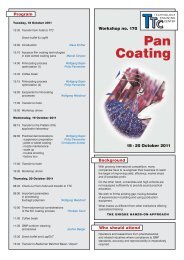Sonderdruck WIP / CIP - Glatt
Sonderdruck WIP / CIP - Glatt
Sonderdruck WIP / CIP - Glatt
Create successful ePaper yourself
Turn your PDF publications into a flip-book with our unique Google optimized e-Paper software.
Fig. 6: Example of a transition junction on a <strong>CIP</strong>–conforming<br />
system (<strong>Glatt</strong>, Binzen).<br />
Viewing ports/blind flanges, etc.<br />
Ideally, the viewing ports are solidly built into the system (Figs. 8 and 9). The welded construction thus<br />
ensures a smooth and flat surface.<br />
Fig. 8: Welded-in viewing port, <strong>CIP</strong>-design, after contamination<br />
(view from the product side) (<strong>Glatt</strong>, Binzen).<br />
6<br />
Fig. 7.- Inflatable seal, <strong>CIP</strong>-capable, in the sealed condition<br />
(view from the inside of the container) (<strong>Glatt</strong>,<br />
Binzen).<br />
Fig. 9: Viewing port of a conventional design (<strong>Glatt</strong>,<br />
Binzen).<br />
With exchangeable flange systems, the seal should be exposed in direct contact with the product and<br />
easily positionable.<br />
Both of these conditions have been fulfilled with a special flange design (O-Plus-System, <strong>Glatt</strong>,<br />
Binzen; Figs. 10 and 11). Here, the O-ring is hollow and, using a variable collar, can be held in two positions:<br />
a) In an unloaded condition, a twisting or an incorrect positioning of the seal seat is avoided,<br />
thereby ensuring a facile installation or dismantling of the flange.<br />
b) In the final sealed state; the O-ring is pressed into the proper position.


